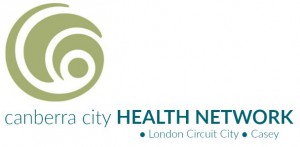Dry Needling or Acupuncture?
Have you ever wondered how it is possible needles can help with pain? Should I get Dry Needling, or Acupuncture? What’s the difference? First it comes with understanding pain. There are many types of pain, for example biomechanical, neural, hormonal, gastrointestinal, psychological, and so on. Just as different types of medication can help modulate pain, different types of treatments can provide relief for different types of pain.
Dry needling is a technique which is often used in acupuncture for musculoskeletal pain. Acupuncture is used for all aspects of health, and is a specialty in Traditional Chinese Medicine (TCM) used in hospitals in Asia.
Dry needling is used local to the area of injury and focuses on the origin insertion, and belly of the muscle to treat musculoskeletal conditions. The points used in dry needling are known as trigger points. Much of these dry needling trigger points coincide with acupuncture trigger points. It is very effective when the source of the problem is purely biomechanical in nature.
Acupuncture is known to deal with diseases of all natures not just limiting to musculoskeletal pain. It will often utilise points ambiguously distal to injury sites, especially when treating various kinds of pains as highlighted earlier.
What is the Mechinism?
To further understand how needles help with pain, it is important to firstly, recognise that pain is a healthy reflexive signal sent to the brain via the central nervous system (CNS) in response to our senses. The signals are a defence mechanism urging action to alleviate the pain. Some pains are resolved when the biomechanical aspect of the problem is treated. Other types of pain require modulation of the CNS to provide pain relief.
In TCM, the most sought-after treatments are for pain management. As imaging technology over the years have made profound advancements, the analgesic mechanism of acupuncture on pain, and its value in treating systemic disease has been a subject of increasing interest for research and clinical trial testing through imaging studies.
The earlier research in the 1970’s focused on the opoid pathways and acupuncture. In 1987, Dr. Pomeranz proposed acupuncture’s mechanism for pain management involving the activation of A-δ and C afferent fibres in muscles which in turn leads to a transmission of signals to the spinal cord. It was studied there was a triggered local release of dynorphin and enkephalins which are endogenous opioids known to mediate pain through various pathways [3].
More recent studies implicate acupuncture is able to modulate pain due to its anti-hyperalgesic effect on the inflammatory reflex of autonomic nervous system, and the receptors to excitatory amino acids on the spinal cord that release pain mediating neurotransmitters. This modulation of neurotransmitters, such as serotonin, dopamine and norepinephrine onto the spinal cord can lead to an inhibition of pain signals due to the pre/postsynaptic inhibition. Similarly, when acupuncture feedback signals reaches the hypothalamus and pituitary, it triggers a release of adrenocorticotrophic hormones and endorphins [1].
This is because acupuncture works on energetic pathways known as Channels and Meridians which are displayed on acupuncture charts. Since the 1960’s, countless studies have worked towards morphological findings of these channels and meridians. Using fMRI and CT studies there were observable differences with acupuncture and non-acupuncture points, as highlighted in our previous article here. (link – Intro to Acupuncture Article)
Over the years, meridian studies have demonstrated the special chemical characteristics amongst the channels and meridians as opposed to the surrounding areas. The findings show there is a marked difference in trans-membrane ion concentration and ion flow. This means the channels have low signal impedance and high electrical conductivity properties for transmission of signals. There is a resulting increased organism excitatory threshold which is implicated by the accomplishment of increased metabolism of cells when stimulated with acupuncture.
This vigorous metabolism creates a quantifiable transcutaneous carbon dioxide emission (TCE). This is the Co2 produced by your cells when metabolising oxygen. TCE is higher when acupuncture is used on acupoints, and the resulting increased metabolism, more blood supply, higher temperature and thus emits an observably stronger infrared radiation. Research has shown that linear bands of infrared radiation orbits on a healthy body, and that these radiation bands share a very similar route to those of acupuncture channels and meridians. Research also shows stimulation of some points regardless of side of the body can cause these special characteristics to be exhibited [2].
In TCM, these characteristics are described and understood using analogies from some of the earliest textbook understandings of energy (Qi), electromagnetism/neurology (Yin-Yang), and the relationship between vital organs (Five Elements).
Written by CCHN Remedial Masssage and Accupuncture Therapist Jacky Chan
- Lin, J. G., & Chen, W. L. (2008). Acupuncture Analgesia: A Review of Its Mechanisms of Actions. The American Journal of Chinese Medicine, 36(04), 635–645. https://doi.org/10.1142/s0192415x08006107
- Wang, G.J., Ayati, M. H., Zhang, W.B., (2010). Meridian Studies in China: A systematic review. Journal of Acupuncture and Meridian Studies, 3(1), 1–9.
- Wang, S. M., Kain, Z. N., & White, P. (2008). Acupuncture Analgesia: I. The Scientific Basis. Anesthesia & Analgesia, 106(2), 602–610. https://doi.org/10.1213/01.ane.0000277493.42335.7b

